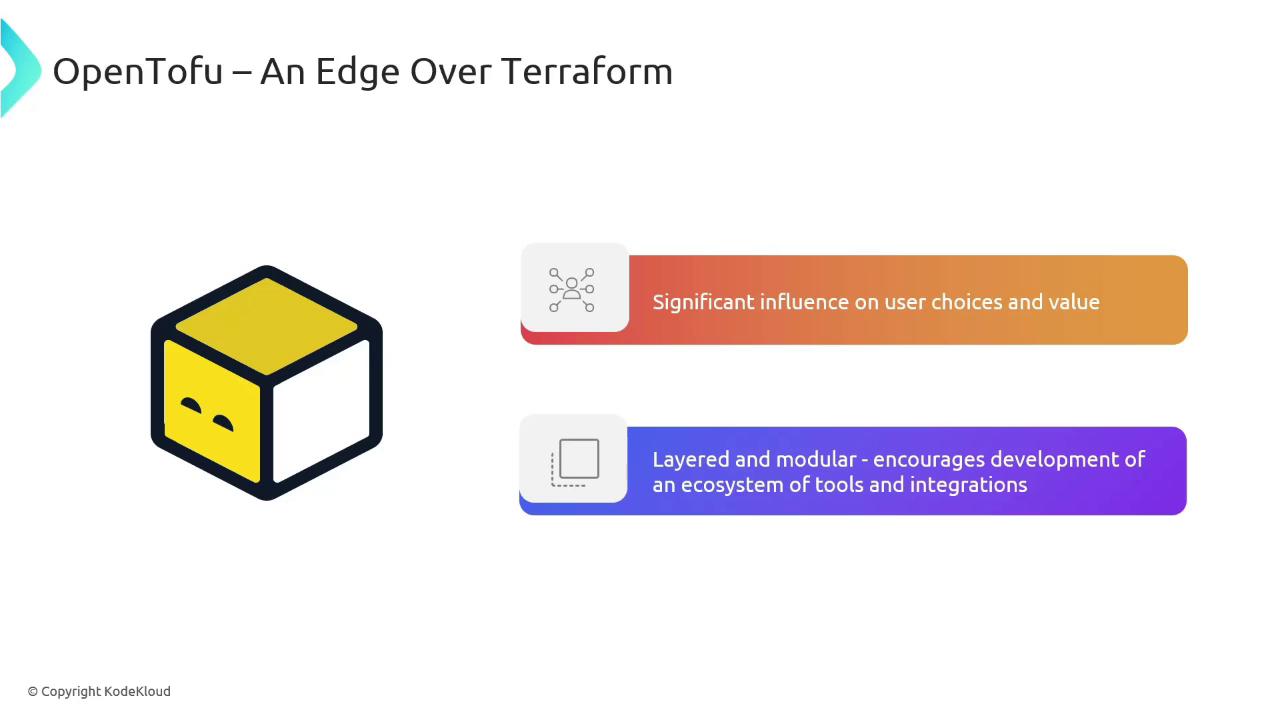OpenTofu: A Beginners Guide to a Terraform Fork Including Migration From Terraform
OpenTofu Beyond Basics
OpenTofu An Edge Over Terraform
OpenTofu delivers a fully open-source, vendor-neutral Terraform fork designed to put users first. In this article, we examine how OpenTofu’s licensing, governance, and architecture empower organizations to scale infrastructure-as-code initiatives without surprise lock-ins or slow feature delivery.
Licensing and Governance
OpenTofu is published under the permissive MIT License, ensuring that users retain full freedom to inspect, modify, and distribute the code. In contrast, Terraform is governed by HashiCorp under the Mozilla Public License 2.0, which enforces certain copyleft requirements.
| Project | License | Governance Model |
|---|---|---|
| OpenTofu | MIT License | Community-driven with an impartial maintainer team |
| Terraform | MPL 2.0 | Core development steered by HashiCorp |
Warning
Terraform’s copyleft license may impose obligations on derivative works, potentially impacting closed-source or enterprise workflows.
Pull requests in OpenTofu are reviewed solely on technical merit, free from corporate influence. A neutral maintainer committee vets every contribution, so enhancements and fixes benefit the broader community.
Feature Prioritization
OpenTofu’s feature roadmap is shaped by its contributors. Instead of vendor-driven timelines, priorities emerge from public discussions and GitHub issues:
- New features are proposed, debated, and triaged in the open.
- Contributors cast votes via issue reactions, ensuring top-requested items rise to the top.
- Community meetings and regular working groups keep development aligned with real-world use cases.
Note
Explore the full OpenTofu roadmap and issue tracker to see how you can influence upcoming releases.
This transparent process means major enhancements—such as advanced state management or native support for cloud services—are fast-tracked based on demand.
Layered, Modular Architecture
OpenTofu’s codebase is carefully partitioned into distinct layers and modules. This structure makes it straightforward to:
- Develop new plugins, provisioners, and backends.
- Navigate the repository and identify extension points.
- Build a rich ecosystem of complementary tools for Terraform-style workflows.
For example, adding a custom provider follows the same pattern as Terraform:
terraform {
required_providers {
example = {
source = "registry.terraform.io/example/provider"
version = "1.0.0"
}
}
}
provider "example" {
# configuration here
}
This modularity fosters innovation: independent teams can focus on specialized modules without risking cross-cutting changes.

Links and References
- GitHub: OpenTofu Repository
- Terraform Official Site: https://www.terraform.io/
- OpenTofu License: https://github.com/opentofu/opentofu/blob/main/LICENSE
- Terraform License: https://github.com/hashicorp/terraform/blob/main/LICENSE
- Kubernetes Basics: https://kubernetes.io/docs/concepts/overview/what-is-kubernetes/
Watch Video
Watch video content